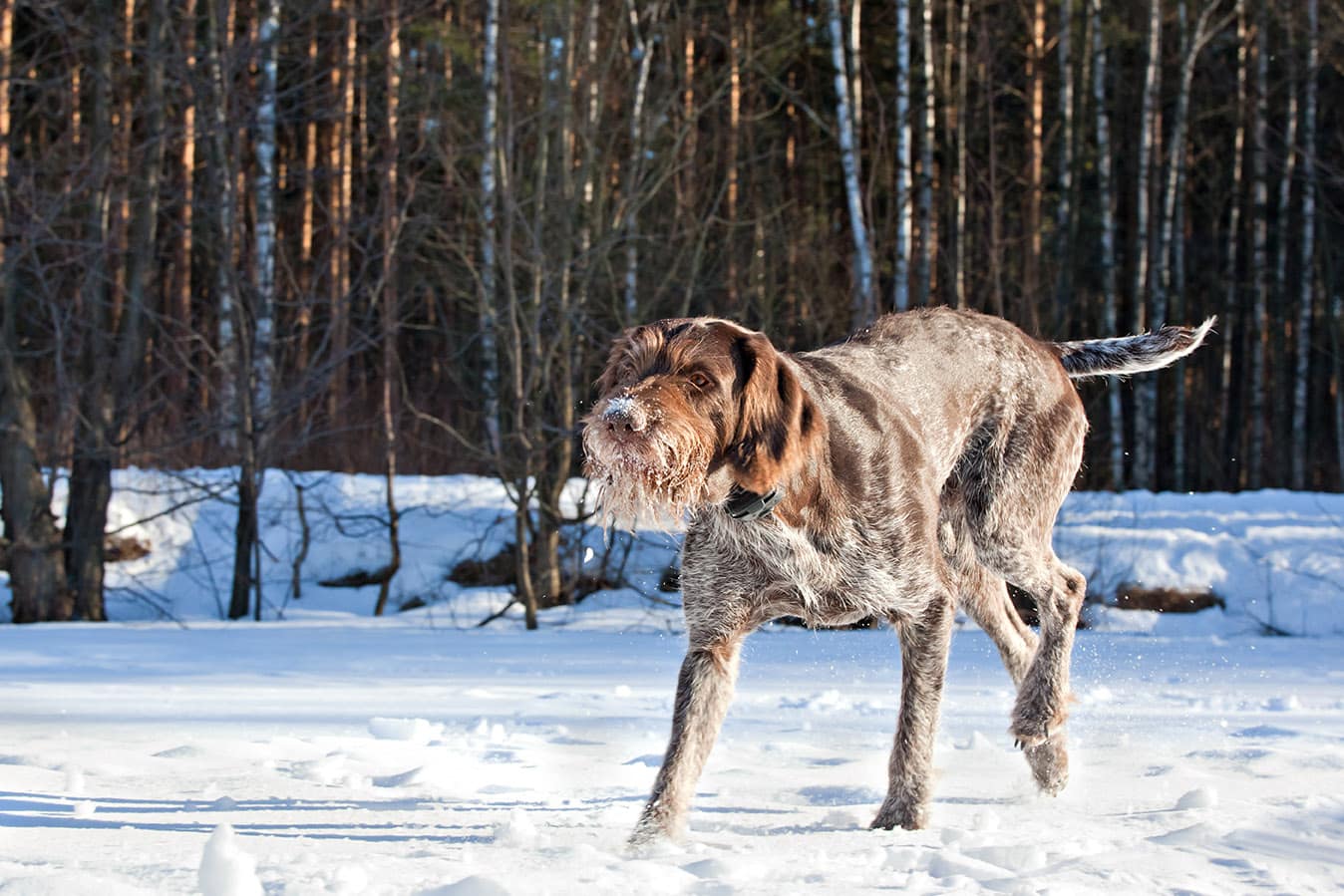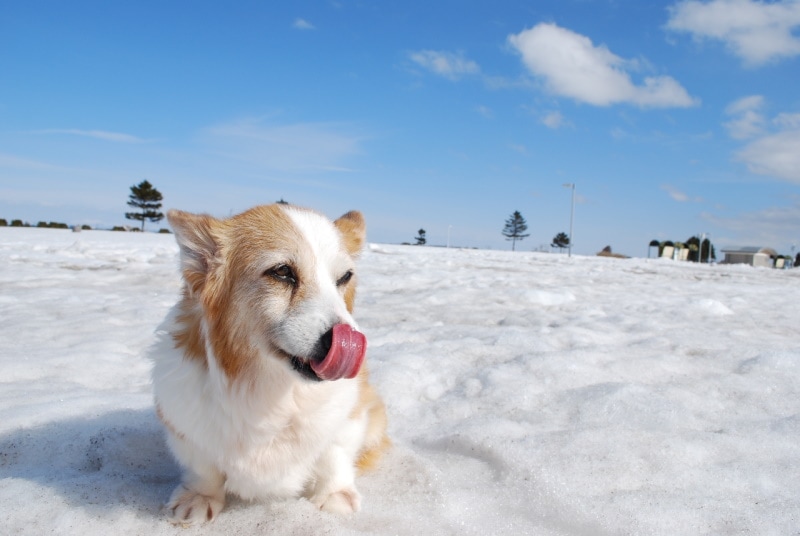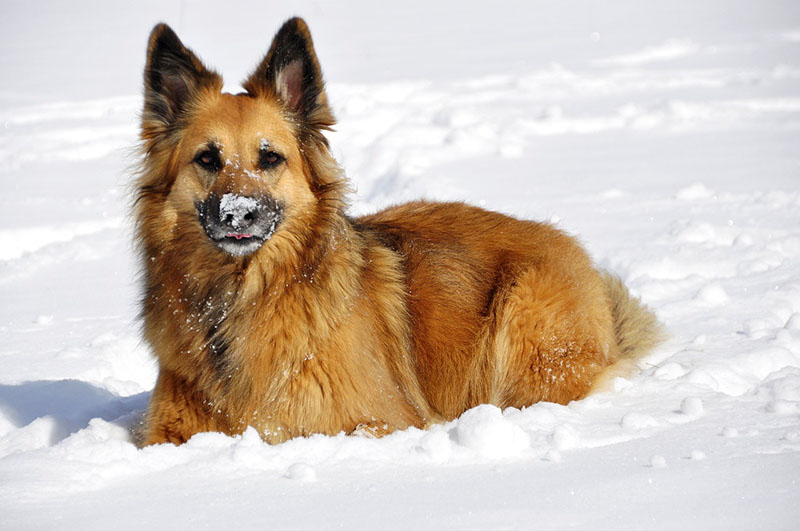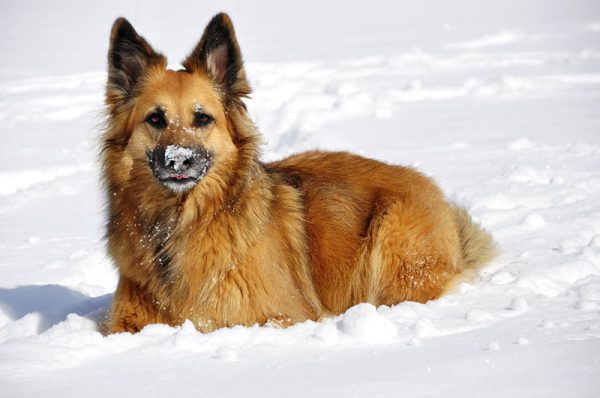Snow is an inevitability in many parts of the country during the winter months. In some areas, it starts in the fall or doesn’t stop until well after the spring months have begun, so it’s unavoidable for your dog to come into contact with snow if you live anywhere that gets snowfall.
While some dogs despise the cold weather and snow, you might notice other dogs happily digging their faces into the snow and snacking on big mouthfuls. If you’ve seen dogs eating snow, then you know it’s a pretty normal thing for them to do, but why do they do it? Is it safe for dogs to eat snow?

The 4 Vet Reviewed Reasons Why Dogs Eat Snow
1. It’s Natural for Them
Before dogs were domesticated, they were wolves that fended for themselves in the harsh natural world. In the wild, water doesn’t always come easily, especially during the winter months. If it’s cold enough for snow to stay on the ground, then most water is likely to be frozen over.
Dogs developed snow-eating as a means of accessing water in their “past lives,” so to speak, and the habit stuck around in their DNA into the modern era.
2. They Want a Drink
Sometimes, dogs get thirsty and will try to quench their thirst in any way possible. If you’ve seen your dog try to drink out of a muddy puddle, you know exactly what we’re talking about.
If your dog is thirsty and they’re out in the snow, it’s very possible that they’ll use the water available to them and eat the snow in an attempt to hydrate. Make sure to check your dog’s water bowl to make sure they have water access. For indoor dogs, make sure the water bowl is filled, and for outdoor dogs, ensure their water source has not become frozen over.

3. They Like Eating Snow
Some dogs just like to eat snow. There’s just something about snow and cold weather that brings out the friskiest behaviors of some dogs. Some dogs may eat snow as part of their zoomies playtime, grabbing mouthfuls of it as they romp. Other dogs may want to lie in the snow and snack on it.
4. There’s an Underlying Medical Condition
If you think your dog’s snow eating is unusual, make sure to have them checked over by their vet. There are multiple medical conditions that can lead to excessive water intake. If your dog seems to be eating snow when outdoors and chugging water when indoors, then there can absolutely be something wrong with your dog and a vet visit is needed to rule out any underlying medical problems.

Is It Safe for Dogs to Eat Snow?
While it can be safe for dogs to eat snow, there are a few things to keep in mind. In its purest form, snow is just precipitation. While acid rain and pollution are concerns, rainwater is often safe for dogs to drink, so eating snow is often just as safe. You should always consider the risks before letting your dog eat snow, though.
Snow can create a solid blanket of white over everything, which means that it has the potential to hide hazards that may injure your dog. Snow can cover sharp objects, toxic chemicals, lawn care equipment, pieces of wood, trash, and other potentially harmful objects. It’s extremely important that you ensure your dog is only allowed to play in the snow in a safe area in which you are familiar with what might be underneath the snow.
Snow also has the potential to be a collection place for dangerous substances that your dog may consume. Antifreeze, pesticides, fertilizers, and other things may build up in the snow, causing your dog to become extremely ill if consumed. Chemicals used to treat roads for snow and ice can also pose a risk to your dog.
Don’t allow your dog to eat snow that is near roadways. Also, avoid letting your dog eat snow that is discolored, dirty, or partially melted. As snow melts, it’s more likely to come into contact with dangerous substances.
If your dog is a big snow eater, there is another consideration for you to take. Consuming snow will lower your dog’s core body temperature. For a dog that is allowed time indoors or has a climate-controlled space to warm up in cold weather, this isn’t much of a risk. However, for outdoor dogs that only have a dog house to shelter in, consuming snow can lead to dangerously low body temperatures. Outdoor dogs should always have free access to a warm, safe space and water that is kept from freezing.
Conclusion
Eating snow is a normal behavior for many dogs, but it can also be indicative of an underlying medical condition in your dog. If your dog’s snow eating seems unusual or excessive, then a vet visit is the best way to make sure there isn’t a problem you aren’t aware of.
Snow eating can be safe, but there are some conditions in which it can be dangerous for your dog. Snow may collect dangerous substances or sharp objects that can harm your dog, so it’s important for you to take precautions when allowing your dog to eat snow.
For dogs that aren’t going to be in a space that will allow them safe access to eating snow, a field guard or a basket muzzle can be a good way to keep your dog from being able to consume the snow.
Featured Image Credit: katja, Pixabay











